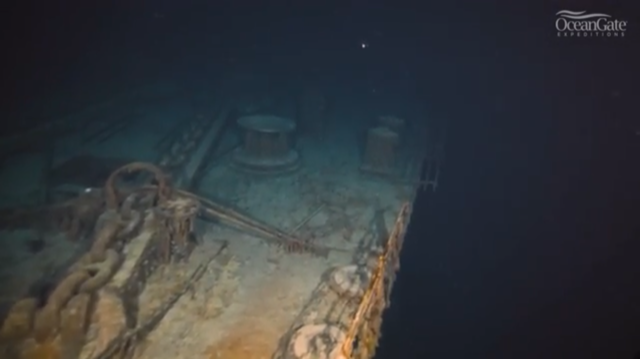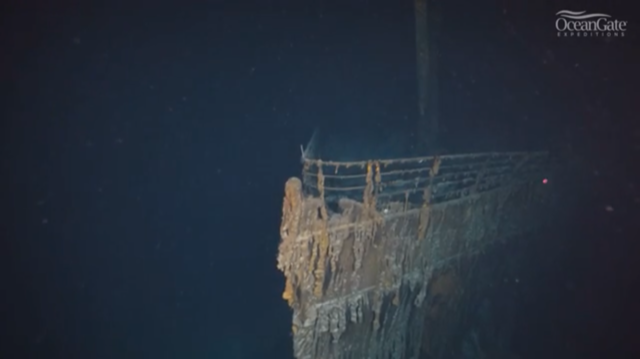New high resolution footage of the Titanic reveals astonishing detail of shipwreck
The Titanic wreck was discovered in 1985 after the ship sank in the Atlantic Ocean on April 15, 1912
Your support helps us to tell the story
From reproductive rights to climate change to Big Tech, The Independent is on the ground when the story is developing. Whether it's investigating the financials of Elon Musk's pro-Trump PAC or producing our latest documentary, 'The A Word', which shines a light on the American women fighting for reproductive rights, we know how important it is to parse out the facts from the messaging.
At such a critical moment in US history, we need reporters on the ground. Your donation allows us to keep sending journalists to speak to both sides of the story.
The Independent is trusted by Americans across the entire political spectrum. And unlike many other quality news outlets, we choose not to lock Americans out of our reporting and analysis with paywalls. We believe quality journalism should be available to everyone, paid for by those who can afford it.
Your support makes all the difference.The highest-resolution underwater footage of the sunken RMS Titanic has revealed astonishingly clear detail of the infamous ship near the bottom of the ocean.
The film was taken in July by a team from OceanGate Expeditions, which sent five people on a special submersible to explore and assess the condition of the wreck.
“I had never seen the name of the anchor maker, Noah Hingley & Sons Ltd., on the portside anchor," Titanic expert Rory Golden, who was on the expedition, said in an OceanGate press release.
"I’ve been studying the wreck for decades and have completed multiple dives, and I can’t recall seeing any other image showing this level of detail. It is exciting that, after so many years, we may have discovered a new detail that wasn’t as obvious with previous generations of camera technologies,” he added.

The Titanic sank after hitting an iceberg in the north Atlantic on April 15, 1912. The wreck was only discovered in 1985, and OceanGate has been leading expeditions of scientists, historians and paying “mission specialists” to see the ship. Notably, it’s already gearing up for another 2023 trip.
OceanGate “uses manned submersibles to create expeditions at depths far deeper than can be reached with SCUBA,” it says on its website.
The new 8k footage - the highest resolution - shows enhanced detail that “will help our team of scientists and maritime archaeologists characterize the decay of the Titanic more precisely as we capture new footage in 2023 and beyond,” Stockton Rush, president of OceanGate Expeditions, said in the press release.
Visible in the footage are the name of the anchor maker, Noah Hingley & Sons Ltd, on the port side anchor; the first of Titanic’s two hulls; the ship’s anchor chain, and one of the cargo holds.

Previously, experts have warned about the level of deterioration of the historic, and arguably most famous, shipwreck. Expeditions and studies, however, can also contribute to the understanding of the underwater life and the ocean floor.
“Today, we have better maps of the surface of the moon than we do of the Earth’s oceans and that needs to change,” Steve W Ross, OceanGate Expeditions Chief Scientist, said earlier this year.
“We know shipwrecks impact the ocean’s floor for decades or even centuries. The Titanic provides a unique deep-sea case study in how artificial structures are impacted by natural elements and inhabitants, in addition to how these structures support or influence marine ecosystems.”

Join our commenting forum
Join thought-provoking conversations, follow other Independent readers and see their replies
Comments